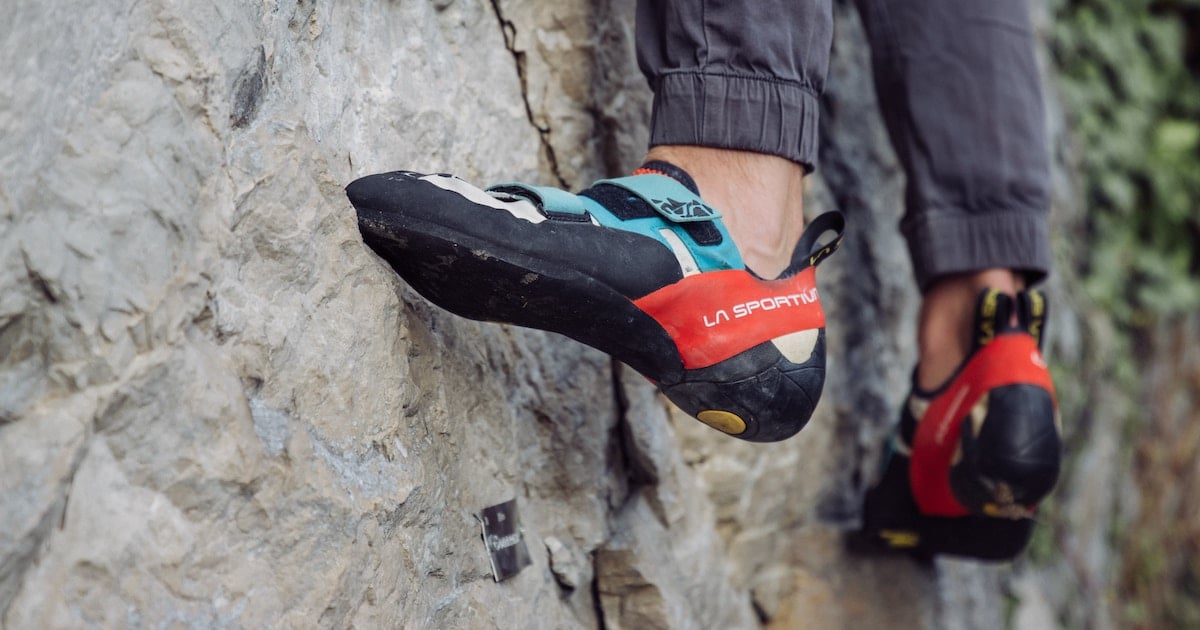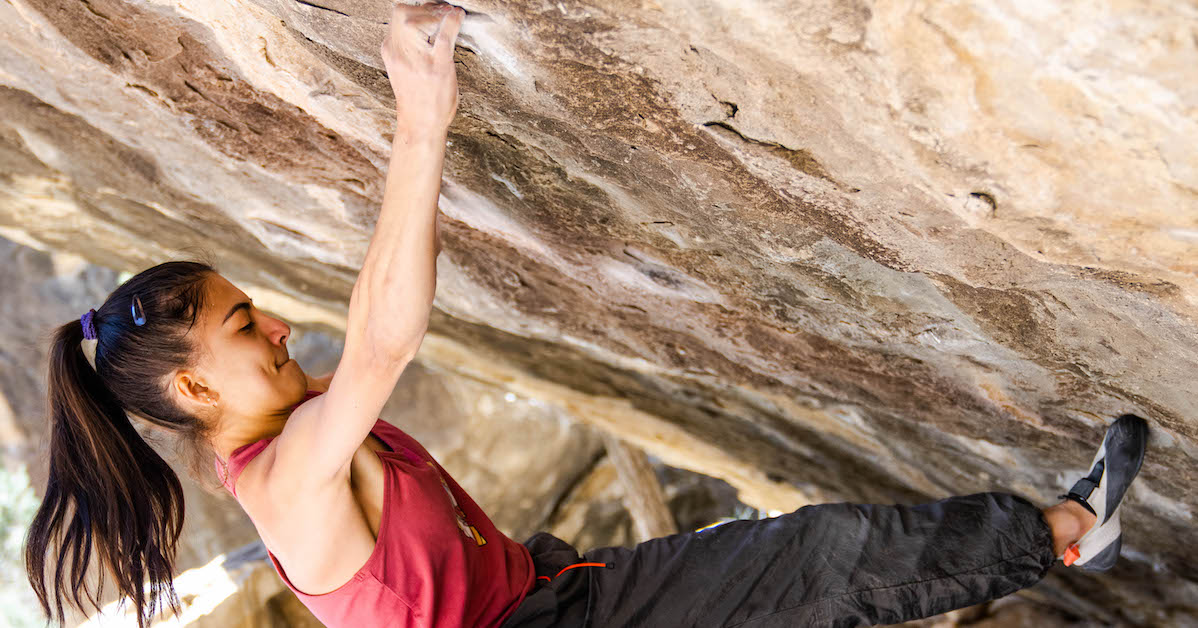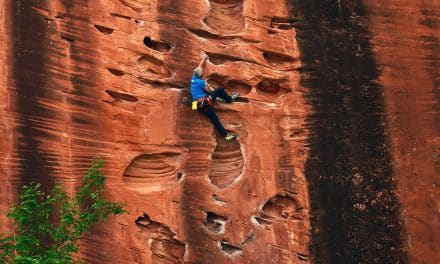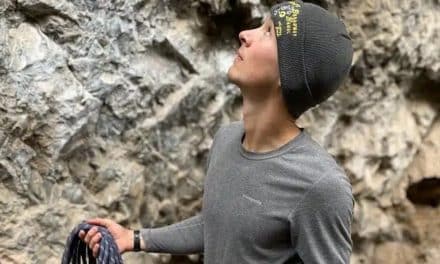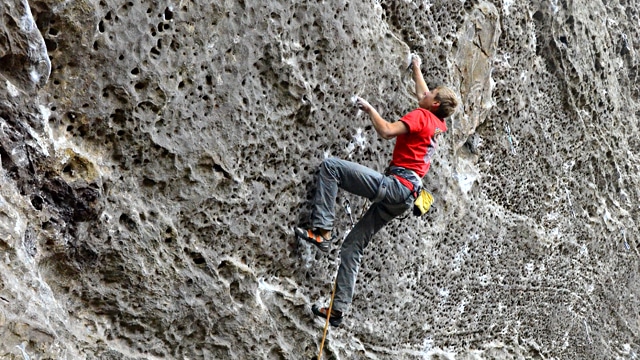If you’ve ever punted after completely blanking on your beta in the middle of the crux sequence, this one’s for you. Boost your memory, support your body, and send your project faster with these visualization techniques.
Chances are, your climbing project sits right at—or maybe even beyond—the limit of your ability. It likely demands so much effort that you’re limited to just a few attempts per session. Power and strength are both finite resources. Even endurance hits a ceiling eventually, if only in terms of time limitations. There are only so many hours in a day. And don’t get me started on skin. Sometimes your tips just can’t handle one more go.
When that happens, you don’t have much of a choice besides calling it a day until your body’s ready to make a comeback. But it’s possible to make progress on your project in the meantime. Visualization allows climbers to mentally rehearse their projects even when their physical resources have run out.
Visualization leads to faster sending for two key reasons. First, it boosts your memory. Watching a mental movie of the route makes it easier to remember the exact sequences that you have to follow while climbing. This is especially important on limit-level climbs, because trying that hard doesn’t leave much brainspace to spare. Can you really blame your brain for blanking on the beta when every micro-move demands its full attention? But the more ingrained those sequences become, the less likely you are to forget what’s next as soon as you pull into the crux.
Secondly, visualization actually imparts a similar stimulus on your body compared to physical activity. Research studying the impact of imagery on muscle growth shows that performing “mental contractions” resulted in a 35% increase in strength over the control group. Those results put whole new meaning behind the idea that “if you believe it, you can achieve it”. The bottom line: visualize the climb in between goes to make improvements without ever actually pulling on.
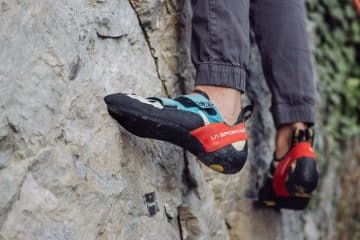
Use beta visualization to help cement those precise foot placements in your mind. Photo by Lena Enz.
Create a Mental Movie
Be careful, though, not to think of visualization as the “easier” version of actually climbing on your project. It’s not as simple as kicking back and playing pretend. Imagery works best when you engage with it fully. That means recruiting all of your senses to create an engrossing scene that feels as close to the real thing as possible.
When creating the mental movie of your project, be prepared to think beyond the basics. Start with the obvious: what the sequences look like. Put the visual in visualization. Where are the holds? How does the climb flow? What are the rests, the clipping stances, the body positions? Next, bring in your other senses. Feel the texture of the rock on your fingers. Hear the clip of the quickdraw. Activate your core with each reach. Don’t be afraid to mime out each move á la Adam Ondra. Infusing as much detail and sensation into your mental movie helps trick the brain into stimulating the body the same way it would on the wall.
Play It Back
Once you’ve created your mental movie, it’s time to play it on repeat. Aim to watch your mental movie at least three times as often as you climb on the route. That’s the frequency that led to the greatest gains among Olympic athletes who engaged in a vivid visualization routine.
Use breaks between attempts while at the crag for visualization. As soon as you touch the ground, climb the entire route again in your mind to cement the sequences while they’re fresh. Call it back as you gear up for another go. Close out the day with one last viewing before you collapse into the car.
Visualization becomes even more important during longer breaks away from your project. Make rest days even more valuable than they already are by putting your brain to work while your body recharges. Watch your mental movie to keep the climb close at hand despite the physical distance. Weekend warriors who only get out to their project in person once or twice a week can pay it a visit much more frequently via visualization.
Sending comes faster with practice. But the body can only handle so much time on the climb itself. Visualization strips away those physical limitations so climbers can put in more valuable practice without digging themselves into a hole. Create your own mental movie and send your project faster!
Related Articles:
- Tall Beta: Hacks for Tall Climbers to Make the Most of Their Height
- Shorty Beta: Hacks for Small Climbers to Maximize Their Reach
- 10 Mental Strategies to Improve Climbing Performance
- How Natalia Grossman Overcame Mental Obstacles for World Cup Wins
- Projecting 101: 6 Tips for Sending Your Project
Copyright © 2000–2023 Lucie Hanes & Eric J. Hörst | All Rights Reserved.

